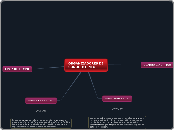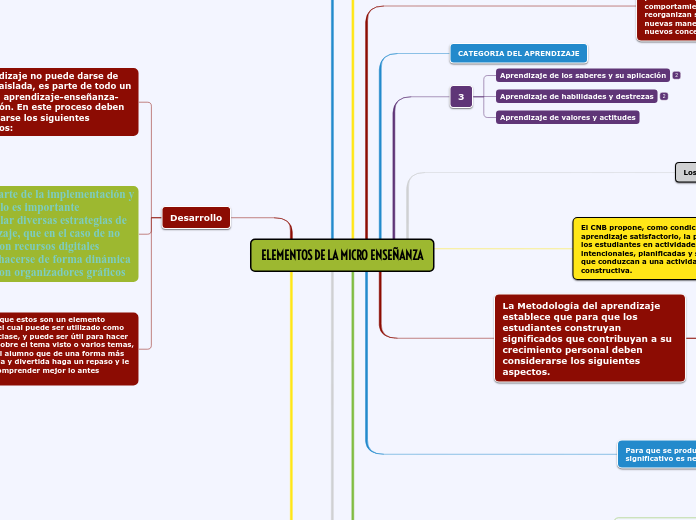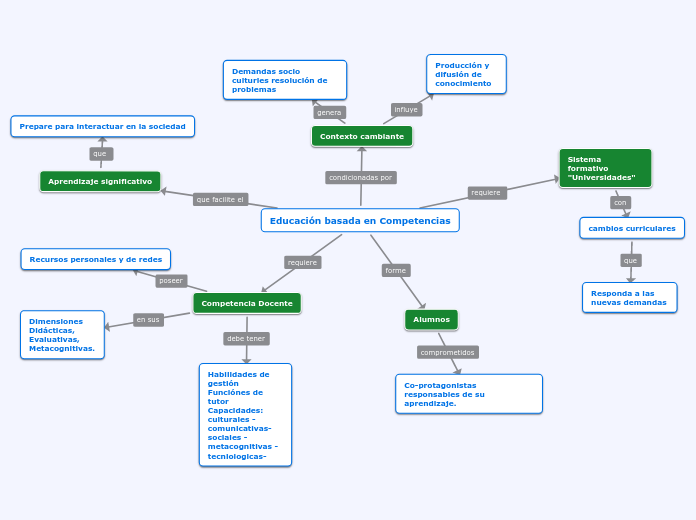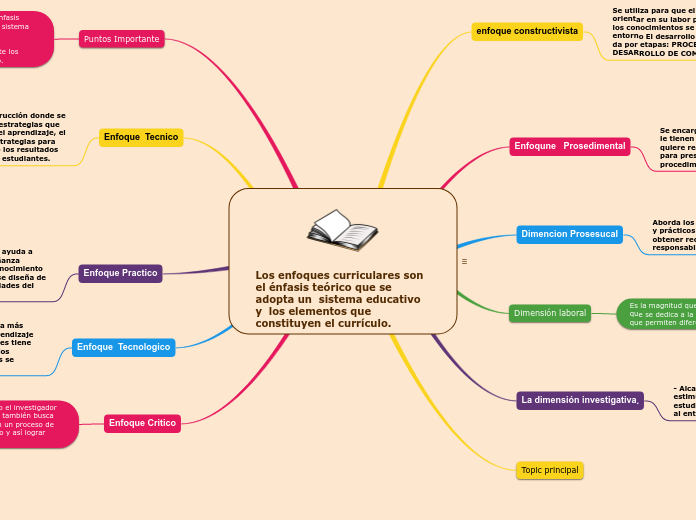Desarrollo físico y cognoscitivo en la niñez media
The Solar System is the gravitationally bound system of the Sun and the objects that orbit it, either directly or indirectly. Of the objects that orbit the Sun directly, the largest are the eight planets, with the remainder being smaller objects, the dwarf planets, and small Solar System bodies.
Aspectos del desarrollo físico
Saturn is known most for its rings.
Galileo Galilei first thought it was an object with three parts: a planet and two large moons on either side.
Not knowing he was seeing a planet with rings, the stumped astronomer entered a small drawing — a symbol with one large circle and two smaller ones — in his notebook.
The rings are made of ice and rock and scientists are not yet sure how they formed. The gaseous planet is mostly hydrogen and helium.
CONDICIONES MÉDICAS CRÓNICAS
Saturn has over 150 moons and satellites. However, of these vast numbers of moons, only 62 are known and confirmed as moons.
Name at least 5 of these moons.
Asma. Enfermedad respiratoria crónica caracterizada por ataques repentinos de tos, silbidos y dificultad para respirar.
Enfermedades o problemas que persisten al menos durante tres meses.
CONDICIONES MÉDICAS AGUDAS
How long does it take for Saturn to go around the sun?
Enfermedades que duran poco tiempo.
IMAGEN CORPORAL
A planet's day is the time it takes the planet to rotate or spin once on its axis.
Write down Saturn's day measured in Earth days.
Creencias descriptivas y evaluativas acerca de la apariencia personal.
JUEGO RUDO
Juego vigoroso que involucra luchas, golpes y persecuciones, acompañadas a menudo por risas y gritos.
Educación de los niños con necesidades especiales
It was once considered a planet but in August 2006 the International Astronomical Union (IAU) downgraded the status of Pluto to that of “dwarf planet.”
Pluto is unlike other planets in many respects. It is smaller than Earth's moon; its orbit is highly elliptical.
It's a cold, rocky world with a tenuous atmosphere. Pluto is a very active ice world that's covered in glaciers, mountains of ice water, icy dunes, and possibly even cryovolcanoes that erupt icy lava made of water, methane or ammonia.
Niños super dotados
A planet's day is the time it takes the planet to rotate or spin once on its axis.
Write down Pluto's day measured in Earth days.
El criterio tradicional de la genialidad es la inteligencia general elevada, demostrada por una calificación de CI de 130 a o más. Esta definición tiende a excluir a niños muy creativos, a los niños de grupos minoritarios y a los niños con aptitudes específicas.
Dificultades de aprendizaje (DA)
How long does it take for Pluto to go around the sun?
Discalculia:discapacidades matemáticas
Trastorno por déficit de atención con hiperactividad (TDAH). Síndrome caracterizado por la distracción y la falta de atención persistentes, impulsividad, baja tolerancia a la frustración e hiperactividad inapropiada.
Dislexia. Trastorno del desarrollo en que la adquisición de la lectura es mucho más lenta de lo pronosticado por el CI o la edad.
Trastornos que interfieren con aspectos específicos del aprendizaje y aprovechamiento escolar.
Discapacidad intelectual
Funcionamiento cognoscitivo significativamente por debajo de lo normal. Se conoce también como discapacidad cognoscitiva o retraso mental.
Aprendizaje de la lectoescritura
Jupiter is a giant gas world that is the most massive planet in our solar system.
Its swirling clouds are colorful due to different types of trace gases.
And a major feature in its swirling clouds is the Great Red Spot, a giant storm more than 10,000 miles wide. It has raged at more than 400 mph for the last 150 years, at least.
Jupiter has a strong magnetic field, and with 75 moons, it looks a bit like a miniature solar system.
Metacognición
How long does it take for Jupiter to go around the sun?
Conciencia que tiene una persona de sus procesos mentales
Decodificación
A planet's day is the time it takes the planet to rotate or spin once on its axis.
Write down Jupiter's day measured in Earth days.
Enfoque para la enseñanza de la lectura que destaca la decodificación de las palabras desconocidas.
Proceso de análisis fonético mediante el cual una palabra impresa se convierte en una forma hablada antes de la recuperación de la memoria de largo plazo.
Recuperación basada en la visión
Enfoque del lenguaje total. Método para la enseñanza de la lectura que otorga prioridad a la recuperación visual y al uso de claves contextuales.
Recuperación basada en la visión. Proceso de recuperación del sonido de una palabra impresa cuando se ve la palabra completa.
Lenguaje y alfabetismo
Mars is a cold, desert-like place covered in dust. This dust is made of iron oxides, giving the planet its iconic red hue.
Mars shares similarities with Earth: It is rocky, has mountains, valleys and canyons, and storm systems ranging from localized tornado-like dust devils to planet-engulfing dust storms.
Aprendizaje del segundo idioma
A planet's day is the time it takes the planet to rotate or spin once on its axis.
Write down Mars's day measured in Earth days.
Educación bilingüe. Sistema para la enseñanza de niños que no hablan inglés, a los cuales se instruye en su lengua materna mientras aprenden inglés y luego pasan a la enseñanza completa en este idioma.
Enfoque de inmersión en el inglés. Método para la enseñanza del inglés como segundo idioma en el cual la instrucción sólo se realiza en inglés.
Aprendizaje por inmersión recíproca (o inmersión doble). Aproximación a la educación de un segundo idioma en que los angloparlantes y quienes no hablan inglés aprenden juntos ambos idiomas.
En 2005, 20% de los niños estadounidenses de cinco a 17 años hablaba en casa un idioma distinto al inglés. El idioma principal que habla la mayoría de esos niños es el español, y a más de 5% le resultaba difícil hablar inglés.
Pragmática
Pragmática. Conjunto de reglas lingüísticas que rigen el uso del lenguaje para la comunicación.
Enfoque psicometrico
Earth is a water world, with two-thirds of the planet covered by oceans.
It's the only world known to harbor life.
Earth's atmosphere is rich in nitrogen and oxygen.
Its name originates from 'Die Erde,' the German word for 'the ground.'
Earth may once have had two moons, nowadays it has just one.
Evaluación de la inteligencia
Teoría triárquica de la inteligencia. Teoría de Sternberg que describe tres elementos de la inteligencia: componencial, experiencial y contextual.
Teoría de las inteligencias múltiples. Teoría de Gardner de que cada persona tiene varias formas distintas de inteligencia.
Prueba de Capacidad Escolar de Otis-Lenon (OLSAT8), tiene niveles para alumnos desde jardín de niños hasta la secundaria. Se pide a los examinados que clasifiquen objetos, que muestren comprensión de conceptos verbales y numéricos, que demuestren información general y sigan instrucciones. Las calificaciones separadas para comprensión verbal, razonamiento verbal, razonamiento pictórico, razonamiento figural y razonamiento cuantitativo permiten identificar puntos fuertes y débiles específicos.
Escala de Inteligencia para Niños de Wechsler (WISC-IV). Esta prueba, que se aplica a niños de seis a 16 años, mide capacidades verbales y de desempeño, arroja puntuaciones separadas para cada una, así como una puntuación total. Las puntuaciones de las subpruebas separadas señalan las fortalezas de un niño y ayudan a diagnosticar problemas específicos.
Batería de Evaluación de Kaufman para Niños (K-ABC-II), una prueba individual para edades de tres a 18 años, está diseñada para evaluar las capacidades cognoscitivas en niños con necesidades diversas (como autismo, problemas de audición y trastornos del lenguaje) y con diversos antecedentes culturales y lingüísticos.
Pruebas dinámicas. Pruebas basadas en la teoría de Vygotsky que hacen énfasis en el potencial más que en el aprendizaje pasado
Enfoque del procesamiento de información.
Venus is Earth's twin in size and has no moons.
Its surface has various mountains and volcanoes. Because of its thick, toxic atmosphere that's made of sulfuric acid clouds, Venus is an extreme example of the greenhouse effect. The average temperature on Venus' surface is 900 F (465 C).
Venus spins slowly from east to west, the opposite direction to most of the other planets.
The Greeks believed Venus was two different objects — one in the morning sky and another in the evening. Because it is often brighter than any other object in the sky, Venus has generated many UFO reports.
mnemotecnia
Estrategias
Organización. Estrategia mnemónica en que se categoriza el material que debe recordarse
Repaso. Estrategia mnemónica para mantener un elemento en la memoria de trabajo por medio de la repetición consciente.
Ayudas externas de memoria. Estrategias mnemónicas que se apoyan en un elemento externo a la persona.
Elaboración. Estrategia mnemónica que consiste en hacer asociaciones mentales que involucran a los elementos que deben recordarse.
Técnicas para mejorar el desempeño de la memoria.
memoria
How long does it take for Venus to go around the sun?
Comprensión de los procesos de memoria
MEMORIA DE TRABAJO. La eficiencia de la memoria de trabajo aumenta de manera considerable durante la niñez media, lo que establece la base para una gran variedad de habilidades cognoscitivas.
Atención selectiva
A planet's day is the time it takes the planet to rotate or spin once on its axis.
Write down Venus's day measured in Earth days.
Control inhibitorio. la supresión voluntaria de las respuestas no deseadas.
Los niños de edad escolar pueden concentrarse durante más tiempo que los más pequeños y enfocarse en la información que necesitan y desean al mismo tiempo que eliminan la información irrelevante.
Función ejecutiva
Control consciente de los pensamientos, emociones y acciones para alcanzar metas o resolver problemas.
Enfoque piagetiano: el niño de las operaciones concretas
Mercury is the smallest, only a little bit larger than Earth's moon. Mercury has no moon.
It experiences dramatic changes in its day and night temperatures: Day temperatures can reach a scorching 840 F (450 C), which is hot enough to melt lead. Meanwhile, on the night side, temperatures drop to minus 290 F (minus 180 C).
It also has a very thin atmosphere of oxygen, sodium, hydrogen, helium, and potassium and can't break-up incoming meteors, so its surface is pockmarked with craters, just like the moon.
Razonamiento moral
A planet's day is the time it takes the planet to rotate or spin once on its axis.
Write down Mercury's day measured in Earth days.
Capacidad del razonamiento formal
Equidad. El ideal de equidad, que impone tener en consideración circunstancias específicas. De este modo, un niño de esta edad podría decir que uno de dos años que derramó tinta sobre el mantel debería ser sometido a un estándar moral menos exigente que uno de 10 años que hizo lo mismo. Con la edad, aumenta el énfasis no sólo en lo que sucedió, sino en las intenciones del actor.
Capacidad del razonamiento formal. Alrededor de los 11 o 12 años, cuando adquieren la capacidad del razonamiento formal, llega la tercera etapa del desarrollo moral.
Etapa de operaciones concretas
Flexibilidad creciente. A medida que los niños interactúan con más gente y entran en contacto con una mayor variedad de puntos de vista, empiezan a descartar la idea de que hay un único estándar absoluto del bien y el mal y a desarrollar su propio sentido de la justicia basado en el trato justo o igual para todos
La segunda etapa, de los siete u ocho años a los 10 u 11, correspondiente con la etapa de las operaciones concretas.
Etapa preoperacional
Obediencia rígida a la autoridad. Debido a su egocentrismo, los niños pequeños no pueden imaginar más de una manera de ver un problema moral. Creen que las reglas no pueden matizarse o cambiarse, que su conducta es correcta o incorrecta y que cualquier ofensa merece castigo, sin que importe la intención.
Primera etapa de alrededor de los dos a los siete años, que corresponde con la etapa preoperacional.
Para conocer el pensamiento moral de los niños, Piaget (1932) les contaba una historia acerca de dos niños. Piaget concluyó que los juicios morales inmaduros sólo se centran en el grado de la ofensa; los juicios con cierto grado de maduración consideran la intención.
Avances
Our Solar System has eight “official” planets which orbit the Sun.
Each planet is at a different distance from the sun. Name its position.
Seriación e inferencia transitiva
Seriación e inferencia transitiva. Catherine puede ordenar un grupo de palos, del más corto al más largo e insertar uno de tamaño intermedio en el lugar apropiado. Sabe que, si un palo es más largo que otro, y que el segundo es más largo que un tercero, entonces el primer palo es más largo que el tercero.
Categorización
Inferencia. transitiva Comprensión de la relación entre dos objetos conociendo la relación de cada uno con un tercer objeto.
Seriación. Capacidad para ordenar objetos a lo largo de una dimensión.
Inclusión de clase. Comprensión de la relación entre el todo y sus partes.
Categorización. La capacidad de categorizar ayuda a los niños a pensar de manera lógica. Incluye habilidades relativamente complejas como seriación, inferencia transitiva e inclusión de clase, las cuales mejoran de manera gradual entre la niñez temprana y la media.
Número y matemáticas
Conteo ascendente. Aprenden el conteo ascendente: para sumar 5 y 3, empiezan en 5 y luego continúan con 6, 7 y 8 para sumar el 3.
Número y matemáticas. A los seis o siete años, muchos niños pueden contar mentalmente.
conservación
Principio de identidad. Sabe que la plastilina es la misma, aunque tenga una forma distinta
Principio de reversibilidad. También entiende el principio de reversibilidad: sabe que puede volver a convertir a la serpiente en una bola.
Descentrar. También puede descentrar: puede enfocarse en la longitud y la anchura.
Conservación. Los niños que se encuentran en la etapa de las operaciones concretas pueden calcular mentalmente la respuesta cuando resuelven varios tipos de problemas de conservación; no tienen que medir o pesar los objetos.
Causa y efecto
Douglas sabe qué atributos físicos de los objetos en cada lado de la balanza afectarán el resultado (por ejemplo, importa el número de objetos, pero no su color). Todavía no sabe que ciertos factores espaciales, como la posición y ubicación de los objetos, establecen una diferencia.
Pensamiento espacial
usar un mapa o un modelo como apoyo para buscar un objeto oculto, pueden dar a otra persona instrucciones para encontrarlo. Puede ir y venir de la escuela, calcular distancias y juzgar cuánto tiempo empleará para ir de un lugar a otro.
Razonamiento inductivo y deductivo
De acuerdo con Piaget, los niños que están en la etapa de las operaciones concretas sólo utilizan el razonamiento inductivo. A partir de observaciones de miembros particulares de una clase de personas, animales, objetos o sucesos, sacan conclusiones generales acerca de la clase como un todo.
AVANCES COGNOSCITIVOS. En la etapa de las operaciones concretas los niños tienen una mejor comprensión que los niños pre operacionales de los conceptos espaciales, la causalidad, la categorización, los razonamientos inductivo y deductivo, la conservación y el número









